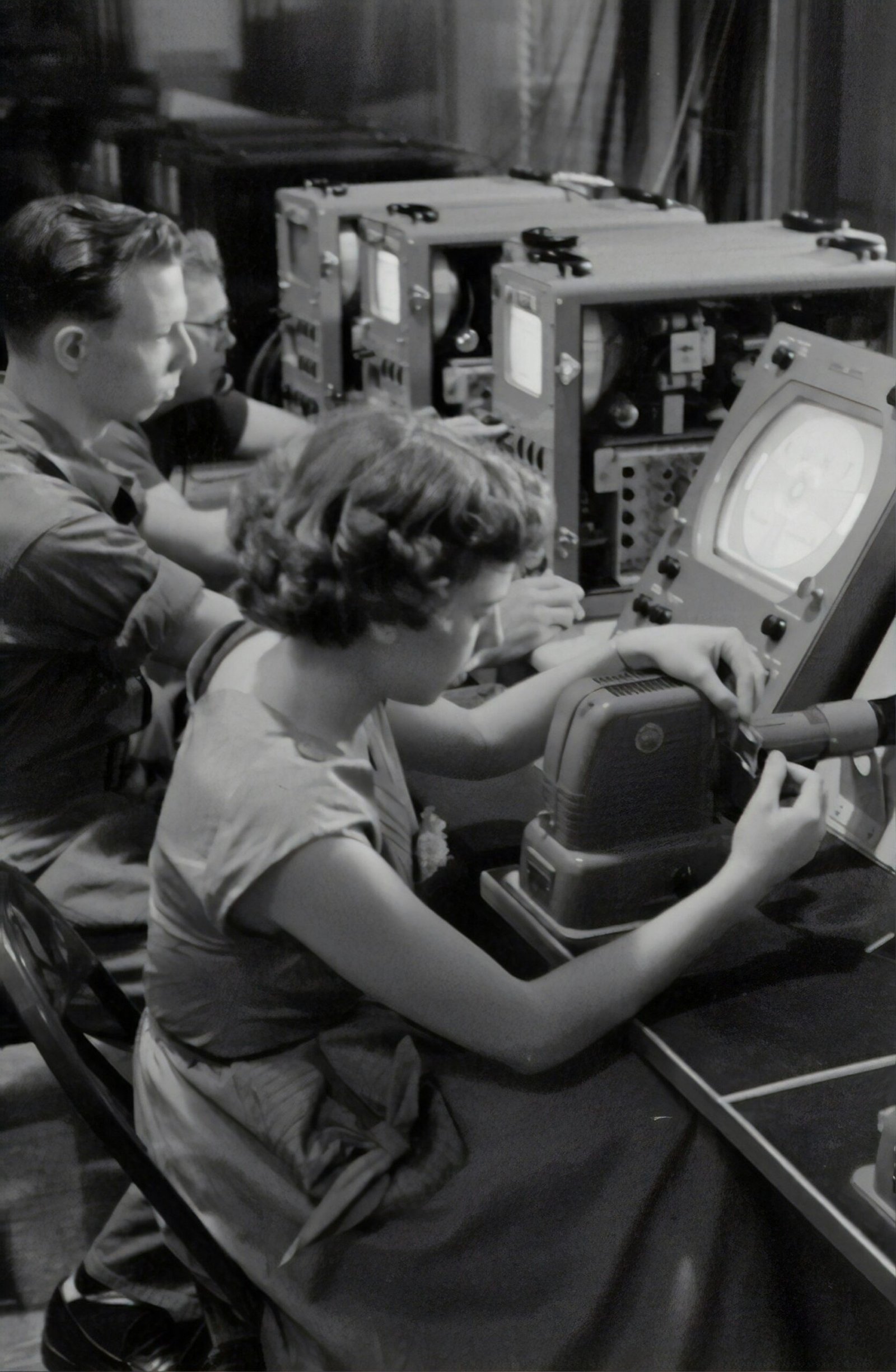Introduction to Pharmaceuticals
Pharmaceuticals play a crucial role in modern healthcare, encompassing a wide range of medications utilized for the prevention, diagnosis, and treatment of various health conditions.
These substances, which can include both chemical compounds and biologically derived products, are essential for managing illnesses, alleviating symptoms, and improving the quality of life for patients.
The ever-evolving pharmaceutical industry continually seeks to enhance therapeutic options, driving innovation and research forward.
Within the realm of pharmaceuticals, drugs are often categorized into two main types: generic drugs and brand-name drugs.
Brand-name drugs are those that are developed and marketed under a specific name by a pharmaceutical company, established following significant investment in research and marketing.
These drugs are typically sold at higher prices due to the development costs and the exclusive rights granted to their manufacturers, typically for a period of 20 years post-patent approval.
Examples of brand-name drugs include well-known medications like Lipitor and Prozac.
In contrast, generic drugs are formulations that contain the same active ingredients as their brand-name counterparts.
They are marketed under their chemical name rather than a brand name and are sold after the patent protection of the brand-name drug expires.
Generics are vital for increasing access to medications; they typically come with a lower price tag while delivering equivalent therapeutic benefits.
The presence of generic drugs in the market fosters competition and facilitates a more accessible healthcare landscape.
Understanding these differences between generic and brand-name medications is crucial for both patients and healthcare professionals.
This knowledge can lead to informed decisions regarding treatment options, cost management, and adherence to prescribed therapies.
As we delve deeper into the nuances of these two categories of pharmaceuticals, it will become clear how they impact patient care and health outcomes.
Understanding Brand-Name Drugs
Brand-name drugs are pharmaceutical products developed by a specific manufacturer and are marketed under a trademark.
The development of these drugs involves extensive research and development (R&D) processes, which can span several years and often require substantial financial investment.
It is not uncommon for the R&D costs to range from hundreds of millions to billions of dollars, as these processes include various stages such as drug discovery, preclinical testing, and clinical trials.
Once a drug has successfully completed the required clinical trials, it can be patented.
The patent provides the manufacturer with exclusive rights to produce and sell the drug for a designated period, typically 20 years from the filing date.
This exclusivity allows the company to recoup its R&D investments and to earn profits to fund future innovations.
During this patent period, no other manufacturers can produce generic versions of the drug, which can lead to higher prices in comparison to generic alternatives that enter the market once the patent expires.
The brand name associated with a drug plays a significant role in consumer perception and trust.
Patients often associate brand names with quality, efficacy, and safety, stemming from the stringent regulatory approval processes these drugs must undergo.
As a result, brand-name drugs tend to dominate the market due to established reputations and the loyalty they command among healthcare providers and patients alike.
In contrast, the economic implications of brand-name drugs can be substantial, impacting healthcare costs and shaping the competitive landscape of pharmaceutical industries worldwide.
In conclusion, understanding the complexities surrounding brand-name drugs—ranging from their R&D costs to patent processes and consumer perceptions—provides critical insight into their role in the healthcare system and the economic landscape of pharmaceuticals, including aspects such as export from India, where generic alternatives are increasingly prevalent.
Understanding Generic Drugs
Generic drugs are pharmaceutical products that are created to be equivalent to brand-name drugs in terms of dosage form, strength, administration route, quality, and intended use.
They provide the same therapeutic benefits as their branded counterparts but typically at a lower price. A key factor in the creation of generic drugs is the expiration of patents on brand-name medications.
Once the patent protection ends, other manufacturers can produce the generic version, allowing for increased competition in the market.
The regulatory landscape for generic drugs is stringent. In many countries, including the United States, generic drugs must undergo a rigorous evaluation process by regulatory agencies, such as the Food and Drug Administration (FDA).
These agencies ensure that generics meet specific criteria that affirm their safety and efficacy.
One crucial requirement is demonstrating bioequivalence, meaning the generic must show that it works in the same way and provides the same health benefits as the brand-name drug within acceptable parameters.
The manufacturing process for generic drugs is also governed by strict quality standards.
Generic manufacturers must follow Good Manufacturing Practices (GMP), which ensure that their products are consistently produced and controlled according to quality standards.
This is critical to ensure that patients receive medications that are effective and safe for use. Moreover, since generic drugs are generally less expensive than brand-name drugs, they significantly enhance access to essential medications, particularly in regions where healthcare costs are a concern.
By promoting the production of generic drugs, countries can improve public health outcomes, allowing wider access to life-saving medications.
This increasing accessibility not only benefits patients but also helps to alleviate the financial burden on healthcare systems globally.
As a result, the availability of generic drugs serves as a valuable component in the overall framework of healthcare delivery.
Key Differences in Effectiveness
When it comes to the effectiveness of medications, understanding the distinctions between generic drugs and brand-name counterparts is crucial for consumers and healthcare professionals alike.
One of the common misconceptions is that generic drugs are inherently less effective than their brand-name versions.
However, regulatory agencies, such as the Food and Drug Administration (FDA), maintain that generic drugs must demonstrate therapeutic equivalence to their branded alternatives.
This means that generics contain the same active ingredients, are administered in the same manner, and have the same intended use as brand-name drugs.
Studies have consistently shown that generic medications can provide the same therapeutic benefits as brand-name formulations.
For instance, a report published in the Journal of the American Medical Association found that after assessing multiple studies, there was no significant difference in therapeutic outcomes between brand-name and generic drugs for several chronic conditions.
This provides substantial evidence that generics are both effective and reliable in the treatment of patients.
Furthermore, the conditions under which both types of medications can be used interchangeably are key to understanding their effectiveness.
In most cases, physicians prescribe generic drugs not only because they are cost-effective but also due to their equivalent efficacy.
It is also important to note that some patients may respond differently to various formulations due to individual metabolism or sensitivities, but these occurrences are relatively rare.
In light of the compelling evidence surrounding the effectiveness of generic medications, it is essential for patients and healthcare professionals to approach the topic with an informed perspective.
The availability of generic drugs facilitates greater access to necessary treatments and can significantly contribute to the reduction of healthcare costs.
By focusing on the efficacy and safety of generics, discussions about the viability of export from India and other countries producing high-quality generic drugs can further enhance their adoption in global markets.
Cost Comparison: Generic vs. Brand Name
The financial implications of choosing between generic and brand-name drugs can significantly impact both patients and healthcare systems.
In general, generic drugs provide a more cost-effective alternative to their brand-name counterparts.
They are often sold at a fraction of the price since they do not carry the same research and development costs associated with bringing a new drug to market.
For many patients, the availability of generic options presents an opportunity to save on their out-of-pocket expenses, making medication more accessible.
Brand-name drugs typically emerge from substantial investments in research, clinical trials, and marketing.
This financial burden tends to be reflected in their pricing. Consequently, patients may find that their insurance plans offer limited coverage for brand-name medications, resulting in higher co-pays or out-of-pocket costs.
In contrast, generic drugs are generally favored in many insurance policies, promoting their usage as a cost-saving measure.
By opting for generics, patients can manage their healthcare expenses more effectively and contribute to reducing the overall economic strain on the healthcare system.
Furthermore, the availability of generics can foster competition, which may lead to further reductions in drug prices over time.
When multiple manufacturers produce generic versions of a medication, the increased competition typically results in lower prices for consumers.
Such dynamics in the pharmaceutical market can encourage more patients to opt for generic drugs, which can be particularly beneficial for those with chronic conditions requiring long-term medication.
In conclusion, the cost comparison between generic and brand-name drugs reveals that generics often provide a more affordable option for patients.
This affordability is vital not only for individual patients but also for the broader healthcare economy, as it facilitates access to necessary medications without incurring significant financial burdens.
Public Perception and Trust Issues
The public perception of generic drugs versus brand-name medications plays a significant role in the pharmaceutical landscape.
Many consumers often associate brand names with superior quality due to longstanding marketing practices and familiarity.
This association tends to foster a sense of trust that generic medications sometimes struggle to match.
A survey conducted by the National Consumers League revealed that a considerable percentage of respondents believed that brand-name drugs were more effective than their generic counterparts, despite the fact that generics must meet the same stringent regulatory requirements set forth by the FDA.
One major aspect influencing this perception is the price difference between brand-name and generic drugs.
Brand-name drugs typically come with a higher price tag, which can create an implicit assumption of higher quality.
However, this does not necessarily reflect the therapeutic equivalence of generics, which are required to contain the same active ingredients and perform identically in the body.
This points to a disparity between public belief and factual equivalency in the efficacy of both drug types.
Furthermore, the trust factor associated with brand names is compounded by the emotional connections consumers often develop with well-established labels.
Media portrayals, advertisements, and endorsements further reinforce these brand loyalties, making it challenging for generic drugs to earn similar trust levels.
Despite this, recent studies indicate a shifting trend, where an increasing number of consumers are becoming more open to generics, particularly due to the rising costs of healthcare.
As consumers gain more awareness about the efficacy and safety of generic options, trust metrics are starting to look more favorable.
Consequently, understanding these dynamics is essential for healthcare providers and policy-makers working towards ensuring greater access to medications through exports from India and other nations adopting generic drug manufacturing.
Impact of Regulations and Approval Processes
The regulatory landscape surrounding the approval of generic drugs and brand-name medications is critical in ensuring the safety, efficacy, and availability of pharmaceuticals in the market.
In the United States, the Food and Drug Administration (FDA) plays a pivotal role in the regulation of both types of drugs.
The approval process for brand-name drugs is typically longer and more complex, requiring extensive clinical trials to demonstrate safety and effectiveness before they can be commercially launched.
Once a brand-name drug receives FDA approval, the exclusivity period begins, during which the patent holder can market the drug without competition.
However, once this exclusivity expires, other manufacturers can apply for approval to produce generic alternatives.
The regulatory pathway for generics is comparatively streamlined, as these drugs are not required to undergo the same rigorous trials.
Instead, manufacturers must demonstrate bioequivalence—meaning that the generic formulation acts in the same way as the brand-name counterpart in the body—allowing for a faster and more cost-effective entry into the market.
This difference in regulatory processes has significant implications for drug availability and market dynamics.
The approval of generics contributes to increased accessibility and affordability for consumers. Furthermore, the FDA’s oversight ensures that these generics meet the same quality standards as their brand-name counterparts.
For instance, the agency requires that generics be manufactured under similar conditions and that their labels contain equivalent information on usage, safety, and dosing.
However, despite the expedited pathway for generics, challenges remain regarding the consistent quality of production across different manufacturers.
Consequently, regulatory bodies continue to enforce stringent guidelines to maintain the integrity of pharmaceutical products available for export from India and other countries.
This continuous oversight is essential for ensuring that both brand-name and generic drugs uphold the principles of safety and efficacy in their respective therapeutic applications.
Future Trends in Generic and Brand-Name Pharmaceuticals
The pharmaceutical industry is currently witnessing a significant paradigm shift, particularly in the realm of generic and brand-name drugs.
As healthcare costs continue to rise, the demand for cost-effective alternatives has propelled generics to the forefront.
The ongoing trend indicates a heightened influx of generics entering the market, which is expected to expand the options available to consumers.
With patents of several well-known brand-name medications expiring, the market is likely to become increasingly saturated with generic versions, thereby fostering competition and driving down prices.
Innovations in drug development play a critical role in shaping future trends within the industry.
Technological advancements, such as personalized medicine and biopharmaceuticals, are influencing the types of drugs that are being developed.
As a result, we can anticipate a surge in the production of biologics and biosimilars, as these therapeutic agents provide unique treatment modalities that were previously dominated by brand-name pharmaceuticals.
The approval processes for generics are also evolving. Regulatory bodies are enhancing their frameworks to expedite the review of generic drugs, which is pivotal in ensuring rapid availability of affordable therapeutics.
In addition to market dynamics, healthcare policies are poised to significantly influence the accessibility and acceptance of generic drugs.
For instance, various health initiatives aimed at encouraging the use of generics over brand-name drugs could reshape consumer preferences.
Furthermore, educational campaigns will likely be crucial in promoting awareness regarding the efficacy and safety of generics, as misconceptions still exist among patients and healthcare providers.
As public perception shifts and regulatory frameworks adapt, the landscape of pharmaceuticals in India and globally is expected to transform, ensuring that exports from India participate robustly in this evolving environment.
Conclusion: Making Informed Choices
Understanding the distinctions between generic drugs and brand-name medications is essential for making informed choices regarding healthcare.
Both types of drugs can serve the same therapeutic purposes, but there are important differences in pricing, availability, and overall public perception.
Generic medications often emerge as more cost-effective alternatives, which may lead some patients to prefer them without fully understanding their efficacy in relation to brand-name options.
When patients are prescribed medication, they should engage in open discussions with their healthcare providers about the available options.
This collaboration is crucial for deciding whether to choose a generic drug or stick with a brand-name solution.
It’s important to note that while generics must meet the same regulatory standards set by authorities, individual responses to the formulations may vary.
Therefore, factors such as allergies, personal medical history, and previous experiences with medications should be considered.
Furthermore, patients should be aware that the potential for varying inactive ingredients between generic and brand-name medications might influence their tolerance or reactions.
Consulting with doctors or pharmacists can aid in making decisions that align with one’s health needs and financial considerations.
In this regard, being proactive and asking questions about the implications of choosing one over the other plays a vital role in achieving effective treatment outcomes.
Ultimately, the conversation surrounding these options should empower patients to take charge of their health decisions.
With careful consideration and guidance from healthcare professionals, one can make choices that not only address medical needs but also are economically responsible, especially in the context of managing overall healthcare costs, including the aspects of exporting pharmaceuticals from India, which might yield affordable yet quality alternatives.








